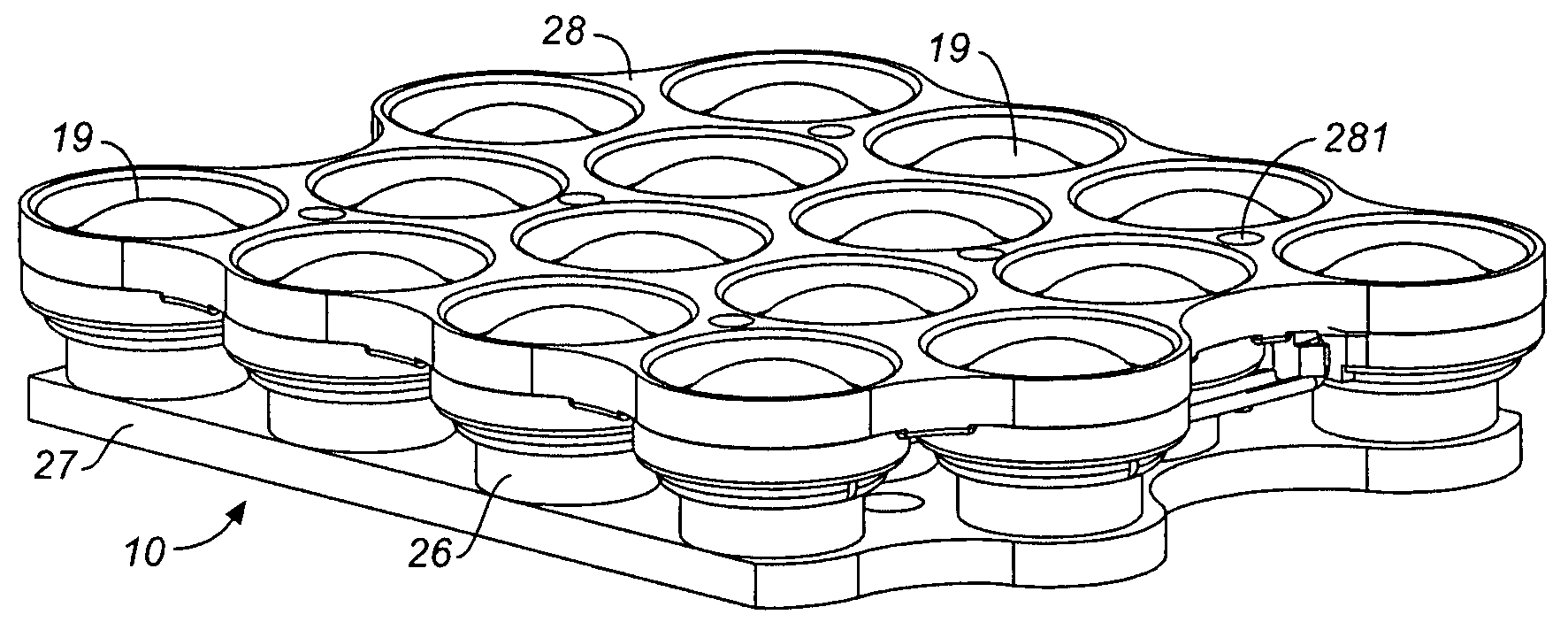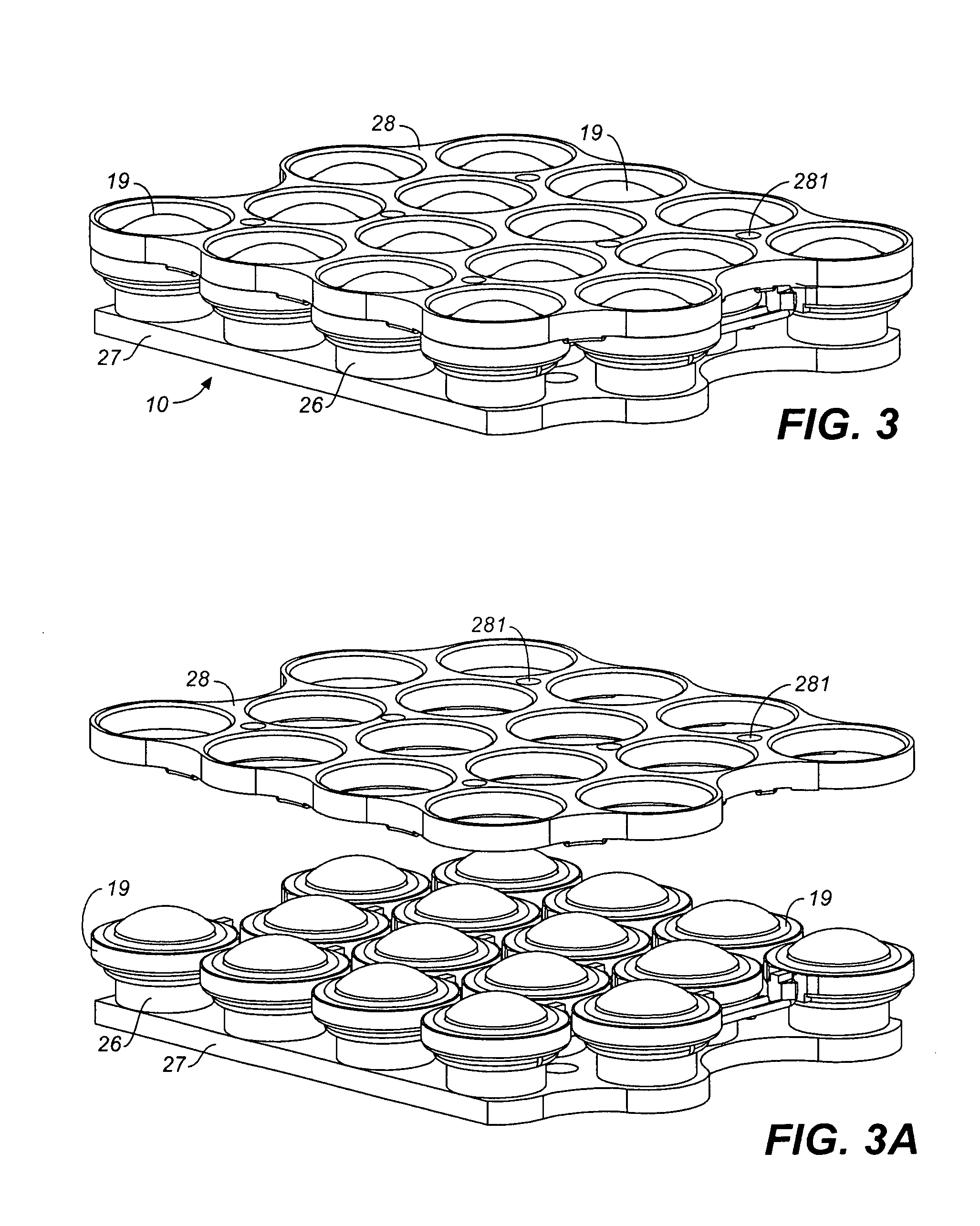Loudspeaker system and method for producing synthesized directional sound beam
a loudspeaker and directional sound technology, applied in the field of loudspeakers, can solve the problems of increasing system complexity and side lobe interference with the loudspeaker operators, and achieve the effects of extending the lower minimum operating frequency of the loudspeaker system, scalable transducer array size, and high acoustic power
- Summary
- Abstract
- Description
- Claims
- Application Information
AI Technical Summary
Benefits of technology
Problems solved by technology
Method used
Image
Examples
Embodiment Construction
[0037]In the loudspeaker and loudspeaker system of the present invention, a desired substantially uniform beam form can be produced over a relatively wide operating frequency range from a plurality of transducer elements set in a transducer array configured, sized and powered as described herein. The beam form, whether fixed or adjustable, can be achieved substantially entirely through signal processing, with different beam forms being achievable for different applications.
[0038]As used herein, “beam form” refers to the shape of the sound beam produced by a loudspeaker at any given frequency. (The term “polar pattern” is also used in the field of loudspeaker acoustics to describe a beam form.) The shape is the magnitude of the sound pressure measured spherically around the loudspeaker, and is typically plotted as a linear or log ratio to the main axis or strongest axis of sound beam. The total angle at which the sound pressure is either 3 dB or 6 dB weaker than the main axis is refe...
PUM
 Login to View More
Login to View More Abstract
Description
Claims
Application Information
 Login to View More
Login to View More - R&D
- Intellectual Property
- Life Sciences
- Materials
- Tech Scout
- Unparalleled Data Quality
- Higher Quality Content
- 60% Fewer Hallucinations
Browse by: Latest US Patents, China's latest patents, Technical Efficacy Thesaurus, Application Domain, Technology Topic, Popular Technical Reports.
© 2025 PatSnap. All rights reserved.Legal|Privacy policy|Modern Slavery Act Transparency Statement|Sitemap|About US| Contact US: help@patsnap.com



